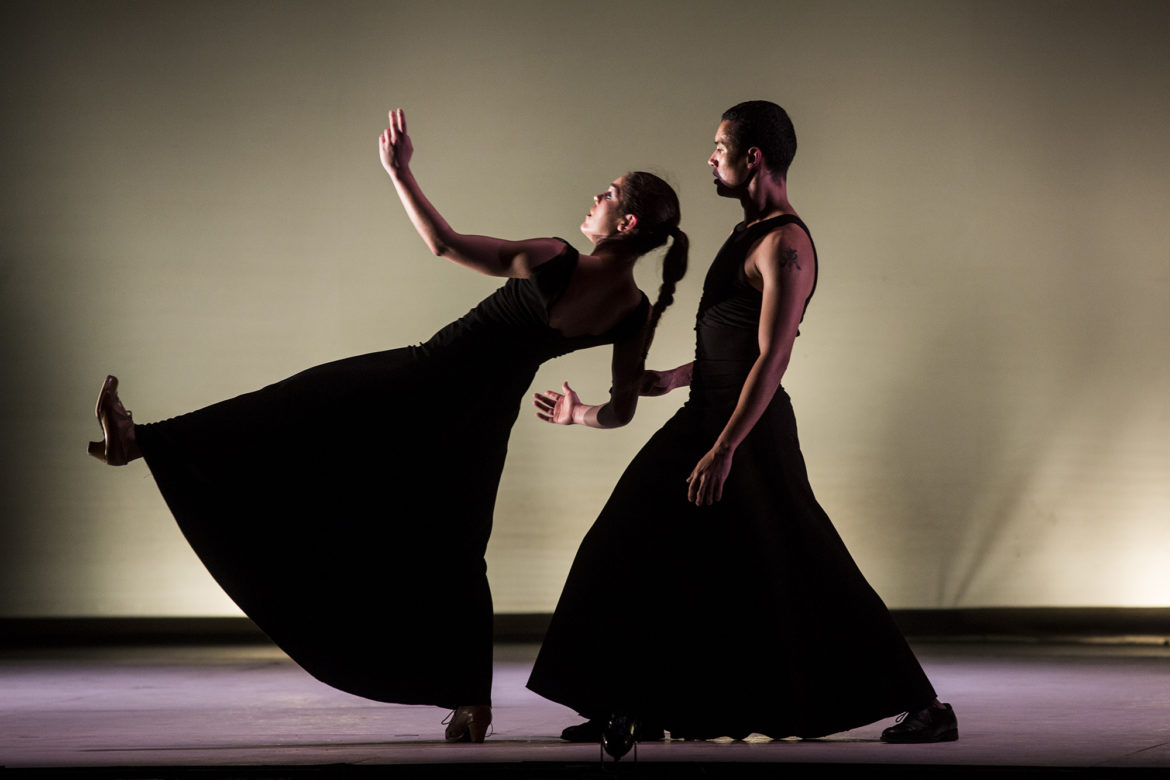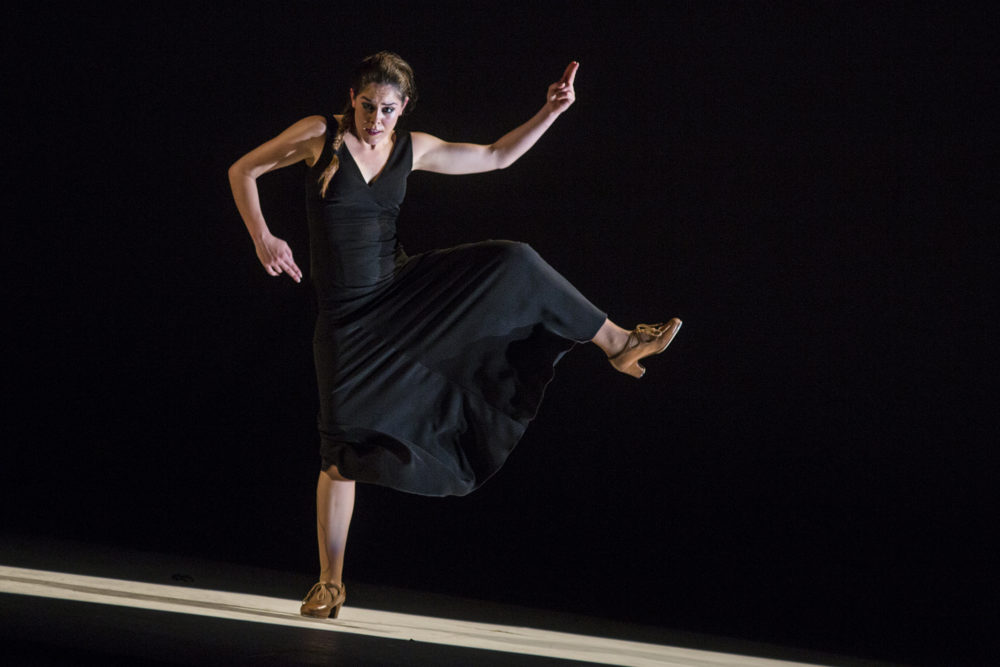Flamenco is an art form in continuous evolution, and while some artists are happy to respect and propagate the tradition, others strive to create a contemporary language that makes them unique and cutting edge. The race for innovation is often unsuccessful, either because the flamenco itself becomes too muted or because the work becomes conceptually muddled.
It’s rare to see a contemporary flamenco piece that manages to truly exalt the art form, while also breaking traditional barriers. Yet, Granada-born dancer and choreographer Patricia Guerrero, managed to do just that with her work Dystopia, which she performed at the Jerez Festival on March 5.
Guerrero’s 2017 performance at the Jerez Festival, Cathedral, was a bold and eccentric take on femininity within the context of the ecclesiastical, taking into account both the sacred and the profane. Dystopia is no less bold or eccentric or even feminist. As the program notes explain, “we are shown a woman within a society that by all appearances is kind but that in reality imprisons this woman and strips her of her true self and almost of her own body in order to change her into a kind of automaton with a predetermined path.”

Guerrero is one of the great new flamenco promises. Her dance style is entirely nonconformist, yet her technique is pristine. She is well known for her agility and lightening speed footwork, which despite being furious – sometimes to the point of frenzy – somehow manages to remain crisp and in perfect rhythm.
As so many young flamenco dancers do, she favours angular, stiff upper body movements, but unlike her contemporaries experiments with more jerky, mechanical or spastic hand and arm gestures. There is a certain level of awkwardness to her current aesthetic that produces a kind of offbeat beauty.
Despite giving us a taste of a yet-evolving Guerrero, Dystopia, is most notable for being one of those rare productions that use fusion to fantastic effect. The production’s music ranges from traditional flamenco to contemporary to classical, and the choreography doesn’t fuse different dance styles so much as it presents them side by side.
Guerrero includes two other dancers, phenomenal flamenco dancer Ángel Fariña and urban dancer Rodrigo García Castillo and unifies their dance with an overarching contemporary approach to the choreography as a whole. In other words, Guerrero and Fariña dance flamenco, García Castillo dances elements of hip hop, pop and break dance, and their styles are blended together with shared contemporary dance elements. It may sound like an arbitrary recipe for disaster, but it’s a mashup that works, and more importantly, it intrigues.

The success of Dystopia is in no small part also attributable to the stage direction and dramaturgy of Juan Dolores Caballero. From its intense color palate of red, black and white to its clean, minimalist set that played with light and shadow to its use of costuming to juxtapose the traditional and the contemporary, the work is an unwavering visual delight.
The show uses a series of leitmotifs to unite the choreographies and show the protagonist’s progression. The ticking of a metronome references the passing of time, broad shoulder posturing and the bowed, flexed arms common to bodybuilders represent masculine strength and power, and the sometimes faceless male figure, embodied by Fariña, leads Guerrero in multiple duets that block, guide or beguile her. The complexity in the meaning behind the work means that its messaging is not overt and easily unraveled, but its dramatic intentions are pretty clear and provide great fodder for interpretation.
Reviewed on 5th of March during Jerez Festival


